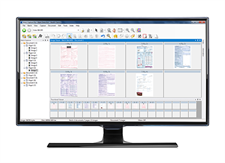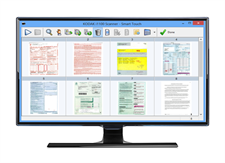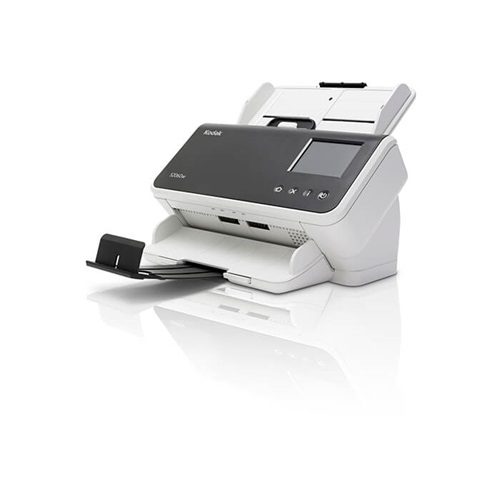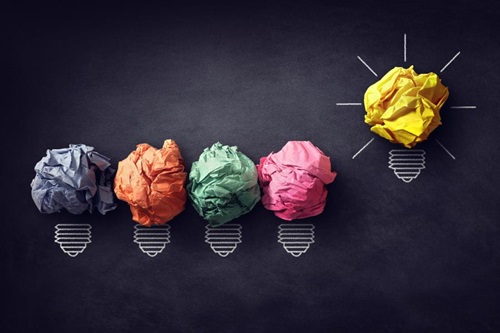Guide to Optical Character Recognition
Learn what OCR is, how it works, and why it’s so essential to our personal and professional lives.
You may not know it, but you have been playing a key role in helping experts decipher old and even ancient historical texts. Every time you fill out a Captcha on a website to prove that you are human, you contribute to this valuable project. Moreover, you participate in a modern text conversion technology called optical character recognition (OCR). But what is OCR? What other hidden roles does it play in your life? Here's what you need to know about this crucial cutting-edge technology.
Optical character recognition is a state-of-the-art technology that underpins dozens of tools that you use every day. Put simply, it is a type of software that "translates" scanned documents into a format that your computer can read.
Without OCR, your computer perceives each document you scan as a single image, the way we see photographs or pieces of art. In that format, your computer cannot recognize individual letters, words, or phrases. This limits the ways that your computer, and therefore you and other users, can interact with the document.
OCR scan software allows your computer to "see" a scanned document the same way it sees text-based documents you might create in Word, Excel, or equivalent programs. This enables your computer and, as a result, you to engage with scanned documents the same way that you would with original digital documents. This includes:
- Using search functions
- Editing
- Using comparison and analysis tools
- Processing, storing, retrieving, and sharing information
Optical character recognition can be used to translate text that is printed, and includes two related processes designed to capture handwriting and human-marked data:
- Intelligent character recognition (ICR): The process of capturing and translating hand-printed and written characters such as on structured forms
- Optical mark recognition (OMR): The process of capturing human-marked data from document forms such as multiple-choice surveys, questionnaires, and tests in the form of lines or shaded areas
Together, these recognition software solutions are useful in a wide array of applications and situations.
How Does OCR Work
1. Enhancement
To help OCR software successfully translate a document, image enhancement software like industry-leading Perfect Page technology from Kodak Alaris will first “clean up” your scans to reduce the unnecessary noise on a document and amplify the data. The cleaner the image, the better and more accurate the translation, so Perfect Page Technology automatically looks for and corrects common scanning and document errors or problems such as:
-
Adjusting for skewed or cockeyed scans
-
Removing spots, lines, and other printing imperfections from the computer's "view"
-
Compensating for stains and other nonprinted imperfections on the page
-
Analyzing the layout of columns, images, tables, and other features
OCR software can convert Perfect Page Technology is built into the portfolio of scanners from Kodak Alaris to optimize data clarity and maximize OCR accuracy while creating the smallest file sizes possible. As a result, scanners from Kodak Alaris provide a 20-70% better* OCR read rate than the competition and create file sizes that are nearly half those of competitive devices.
2. Classification
Once the data is converted and enhanced, the next step in the OCR process is understanding what document type has entered the system and determining the next step for that document type.
OCR, ICR, and OMR enable capture software like Kodak Capture Pro and Kodak Info Input Solution to determine what type of document has been ingested. Then the software can take the images and enforce classification rules based on document content, document layout, barcodes, or indexing data.
Classification will determine if a document is, for example, an invoice, patient record, loan file, or tax record. And our Info Input Solution can do advanced document capture with only one or two samples to “learn” to classify the documents.
Kodak Alaris accomplishes this via patented machine learning algorithms. The system uses a variety of techniques to classify the data: search content, images, barcodes, and one document merging. If the system has low confidence in any document it attempts to classify, the process can call upon a human operator for confirmation — just as we are called upon to verify ancient texts that computers can’t decipher using Captcha.
3. Data Extraction
The last step in the OCR process is data extraction.
Extracting the most crucial information out of a document to use as metadata or index data is vital for retrieval and processing. Automated classification based on rules informs the system of what key information should exist within a document and, often, where this information should be located.
Software solutions from Kodak Alaris can identify the text in your document using pattern and feature recognition. They identify the language of the document being scanned and sort text into individual letters, words, sentences, and paragraphs.
Next, the software extracts and creates a copy of that information to use as metadata for the next phase of the process. In the case of documents, metadata can be used to organize, find, and/or feed documents into another type of business system.
With these solutions, you can extract the data based on business rules and information that a company needs through database lookups. Users can set up the indexing process to automatically extract key data from documents (via barcode, OCR, ICR, or OMR), reducing processing time.
Why OCR Matters
OCR technology offers reams of benefits in both the personal and professional spheres. Optical character recognition software makes it possible to translate printed text from almost any material and:
-
Search your documents, including scanned copies of out-of-print books and other texts
- Analyze, edit, and compare scanned documents quickly and accurately
- Share information that you otherwise could not
- Apply text-to-speech software to scanned documents, making them accessible to audiences that otherwise could not read them
- Store documents in more compact forms and keep inexpensive digital backups of important documents
- Process documents digitally in real-time for security and authentication purposes
- Reduce the need for time-consuming and error-prone data entry in the workplace
- Upload historical documents to searchable genealogy databases online
Whether you realize it or not, you use many of these functionalities each day. You also benefit from other people and organizations applying it, as well. For example, police use of OCR technology to identify license plates helps them keep us safe. Banks' use of digital signature recognition, a form of OCR, prevents would-be identity thieves from accessing and spending your money.
Service providers in a range of industries can offer you better pricing and faster service because they are able to use OCR to scan, upload, compare, and edit contracts instead of paying individual people to do each of those steps. Whenever you use an app such as Google Translate to translate a sign or label while traveling, you benefit from OCR.
OCR in the Workplace
OCR can be particularly beneficial in the workplace. For example, companies can scan existing documents through OCR software and instantly turn them into formats compatible with text-to-speech programs.
This can help businesses meet ADA compliance standards without needing years of time and tremendous amounts of money and staff hours to get there. It also enables companies to meet the needs of sight-impaired customers in real time.
In other industries, such as health care, OCR technology can literally save lives. Scan software for OCR can make the enormous amount of information in a patient's medical history savable, searchable, and verifiable in ways that improve accessibility and prevent dangerous errors.
Kodak Alaris and OCR
Kodak Alaris understands the critical role OCR plays in scanning your documents, be they personal or professional. That's why we provide free and advanced OCR software with every scanner.
Our scanners are designed to integrate seamlessly with your other digital tools. From smart devices to apps to old standbys like email, our programs work with all of your digital infrastructures. We make it easy to move, store, and share information, no matter how or where it enters your system.
OCR scanning software from Kodak Alaris has helped our clients:
- Grow their businesses
- Innovate
- Save money
- Increase efficiency
- Improve service and customer satisfaction rates
- Minimize their environmental footprints
Our technology is backed by our top-notch technical assistance program, ensuring that you get the most out of your purchase every time. Whether you are interested in Kodak Alaris for personal or professional applications, we have the right hardware, software, and support solutions for you.
Learn More
Optical character recognition software from Kodak Alaris takes your scanning from basic to brilliant. Visit a local reseller partner to learn more about what software and scanners from Kodak Alaris can offer you today.
*Based on 3rd Party testing performed by BLI and commissioned by Kodak Alaris. Test was designed by Kodak Alaris with all devices tested in similar operational conditions and where tested with similar operational methods.
Insights and Case Studies
Scanning the Perfect Page Every Time
Take advantage of advanced image science using Perfect Page to optimize scanning
How Kodak Alaris Innovates with Scanning Technology
With our scanners and Perfect Page Technology, scanning and digitizing high-volume projects, capturing quality images at top speed, and protecting original documents has never been easier.
Related solutions

Capture Pro Software
- Ideal for paper-intensive business applications
- Extensive integration with ECM systems
- Network and Import modules available

Smart Touch Technology
- Eliminate complicated multi-step scanning processes with one-touch simplicity
- Configure up to twenty different functions to fit your specific scanning needs
- Easily scan a document to a file location or common cloud services
Related Challenges
ABOUT THE ALARIS DIVISION OF KODAK ALARIS
Kodak Alaris is a leading provider of information capture and intelligent document processing solutions that simplify business processes. We exist to help the world make sense of information with smart, connected solutions powered by decades of image science innovation. Our award-winning software, scanners, and professional services are available worldwide and through our network of channel partners.
Partners
Privacy Notice | Legal / Site Terms | California Notice at Collection | Do Not Share My Personal Information
© 2024 Kodak Alaris Inc. TM/MC/MR: Alaris, ScanMate. All trademarks and trade names used are property of their respective holders. The Kodak trademark and trade dress are used under license from Eastman Kodak Company.

